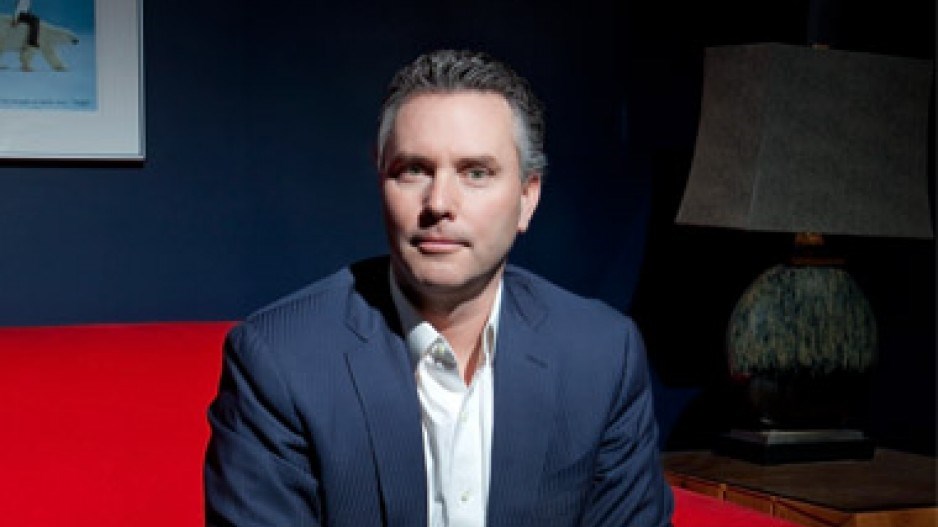He spearheaded Fronteer Gold's growth from a $2 million 2001 startup into its $2.3 billion sale to Newmont Mining Corp. (NYSE:NEM) in 2011. Now Mark O'Dea is CEO and chairman at Blue Gold Mining Inc. (TSX-V:BGX) and chairman at Pilot Gold Inc. (TSX:PLG). Business in Vancouver recently caught up with the renowned resource industry dealmaker to discuss his latest mining ventures and the major trends affecting B.C.'s exploration sector.
Q&A
Q: Blue Gold Mining has just announced a merger with Riverstone Resources. Why did you do this deal?
A: We started Blue Gold about 18 months ago as a vehicle to go out there and do some shopping. One of the concepts was to focus on West Africa, and it's taken us about 18 months to consummate the right deal in that jurisdiction. We've looked at well over 100 deals, so it's been a pretty intensive period of due diligence and project reviews and corporate reviews. This was an opportunity where we really liked the technical merits of the project, and we see a good cultural fit between the two groups.
Q: What sets this deal apart from the others you looked at?
A: There are two principal drivers that make a successful mining company or exploration company on its way to production. One is the near-term visibility of this project in terms of production. So [Riverstone's] Karma project itself has recently gone through a [preliminary economic assessment] process and scoped out a really nice looking project that is scalable but shows a clear path toward near-term production within a time period that's appealing to us and we think is going to be appealing to a broader investment base. And then there's the organic growth that their land package brings to the table. It isn't just a "what you see is what you get" type of acquisition where the ounces that are on the books are all you're going to see. We think there's a lot more gold to be found that's going to complement the existing project that's been scoped out, in and around the existing proposed pits as well as farther afield.
Q: Why West Africa?
A: The prolific and widespread nature of mineralization there. It's a jurisdiction that really hasn't had the same amount of exploration effort as other jurisdictions have with similar geology. So there's a lot of gold. And in Burkina Faso [where the Karma project is], for example, it's really only had a good solid 20 years of exploration effort and of that, let's say 10 has really generated some new mining ventures. And despite that really short history, there's well over 30 million ounces of gold in the country in current reserves and resources. There have been six mines permitted and in production since 2007. It's got a mining-friendly code. It views mining very favourably as a big part of the economic future of the country, and it shares the same geology as other prolific adjacent countries like Ghana and Mali.
Q: What have you been doing with Pilot since you spun the company out of the Fronteer sale?
A: The big transformational events that occurred at Pilot over the last year were the acquisition of a key project in Nevada called Kinsley and then the retooling of the deal we had with [a subsidiary of] Teck Resources Ltd. (TSX:TCK.A and B) in Turkey on the TD Tower project. We rejigged the deal so that Pilot assumed operatorship and is in the process of assuming majority interest in the project. We've been really keen on TD Tower since its inception and since the start of our deal at Teck on that project four years ago, and our shareholders were really encouraging us to go out and regain control of it and move it as quickly as we can up the value curve. Between TD Tower and Kinsley, those are the two projects that have really captured our energy and the imagination of investors. On the back of positive results from each of those projects, we were able to raise money at a time when it has been historically difficult to raise money. But our sense is the buying that has been pent up for the last 12 months is really starting to show its strength and there have been some strong financings out there from other groups. There's clearly an appetite for good projects with good management.
Q: What trends are you seeing that may affect B.C.'s junior miners?
A: [The third round of quantitative easing (QE3) by the U.S. Federal Reservein September] really prompted the most recent run-up in gold price. Some funds got back into gold equities in anticipation of QE3, but many didn't and have missed the most recent run-up in gold stocks, and hopefully we'll see some funds playing catchup. So I think that could be another pent-up source of buying to rebound some portfolios because they missed the initial 20% lift in the gold equities. It seemed to come out of nowhere, and it was really driven by QE3.
Q: What projects are attracting investor attention?
A: It seems inevitable to me that as project costs, [capital expenditure] and operating costs increase, companies – regardless of size – will be focusing more on project economics as opposed to project size. Smaller projects with better returns all of a sudden become more attractive to potential buyers and to investors.
Q: Where is the price of gold heading?
A: I'm optimistic that the price of gold is going to continue to be strong here for the balance of the year and into next year. I think the concerns around economic growth are still there, sovereignty debt issues are still there, the debasement of currency, inflation concerns, the demand for physical gold. All those factors will continue to drive gold prices in the future and it's still a highly coveted asset. I think it's the right space to be in, especially in this sort of economic environment.




